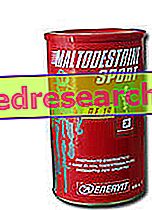Generality
Capsicin or Capsaicin is the active ingredient of chili pepper (plants of the genus Capsicum ). Present in the fruits (berries) and seeds of these plants, capsicin is known and appreciated for its rubefacient action.

The violent and spicy flavor of the chili pepper, capable of enhancing a large number of dishes, is linked precisely to the abundant presence of Capsaicin.
The same substance is contained in smaller quantities in sweet peppers, botanically close to the chili pepper.
Infinitesimal dosages of Capsaicin are enough to cause a strong burning sensation. This stress causes a rapid release of adrenaline, giving the body a boost of energy.
This first hormonal discharge is followed by the release of endorphins, endogenous opioids endowed with a powerful analgesic and exciting activity.
By virtue of its biological properties, Capsaicin is included in the formulations of numerous supplements and various cosmetics with direct activity on the microcirculation. There are even Capsaicin-based drugs used in the treatment of peripheral neuropathic pain; an example is given by the Qutenza registered specialty.

Capsicin or Capsaicin: Chemical Structure
Indications
Why is Capsaicin used? What is it for?
In spite of a not entirely characterized molecular activity, Capsaicin is today used in various clinical and preventive fields.
More precisely, according to recent evidence, Capsaicin could:
- It is effective as an anti-inflammatory agent, especially if used topically;
- Exercise an immunomodulatory action worthy of note;
- Be valuable in the management of inflammatory diseases such as rheumatoid arthritis;
- Exercise an analgesic action;
- Improve physical endurance capabilities;
- Support weight loss;
- Exercise a modest anticancer action.
Property and Effectiveness
What benefit has Capsaicin shown during the studies?
Although most of the currently available studies refer to experimental models, the first clinical evidence, mostly obtained on the Asian population, seems to confirm the clinical utility of Capsaicin.
Capsaicin and tumors
According to some authors, Capsaicin could, at least in vitro, exert a valuable antitumor activity, intervening on delicate molecular mechanisms.
More precisely, Capsaicin would seem on the one hand to facilitate the apoptotic process, or programmed death, of tumor cells and on the other inhibit the expression of a factor known as VEGF, responsible for the vascularization of the tumor mass and the consequent metastasis.
Capsaicin and inflammatory diseases
The anti-inflammatory activity of Capsaicin, mediated by an inhibitory action against the expression of inflammatory cytokines, would seem effective in various pathological conditions, such as rheumatoid arthritis, articular pathologies, trauma, psoriasis and atherosclerosis.
Capsaicin and pain
The analgesic use of Capsaicin has been known for years, so much so that in China it was used to rub chilli pepper extracts on the eunuchs scrotum before castration.
What our ancestors had found empirically was recently confirmed by the discovery of specific receptors for Capsicin.
These receptors play a fundamental role in thermal sensation and pain. Their bond with Capsaicin, after an initial, intense activation, tends to inactivate them, desensitizing them and determining the analgesic properties of the substance.
Capsaicin and obesity
The antiobesigena action of Capsaicin has instead been observed also during clinical trials.
This activity could be correlated both to the activation of proteins known as UCP, responsible for the dissipation of energy in the form of heat, and to the activation of the sympathetic nervous system.
Both properties would carry out an inducing activity towards the metabolism, increasing the thermogenesis and the consequent basal metabolism.
Capsaicin and sport
The improvement activity of Capsaicin in respect of athletic performance, would be due to the presence of some studies, mostly conducted on small rodents.

To better understand the real ergogenic potential of Capsaicin, it would be correct to wait for statistically relevant clinical trial results.
Doses and method of use
How to use Capsaicin
Although it is not possible to identify a standard and reproducible dose of Capsaicin, in several studies it has been suggested to take 1-3 mg of Capsiate, a precursor of Capsaicin, preferably early in the morning.
Side effects
The use of Capsaicin has generally proved to be safe and well tolerated.
There are currently no known clinical and relevant adverse reactions related to the use of this active ingredient.
However it would be useful to remember the potential irritating activity on the mucous membranes of Capsaicin taken at high doses.
Contraindications
When should Capsaicin not be used?
The use of Capsaicin is contraindicated in case of hypersensitivity to the active principle or to structurally related molecules.
Pharmacological Interactions
Which drugs or foods can modify the effect of Capsaicin?
Not known drug interactions are currently known.
Precautions for use
What do you need to know before taking Capsaicin?
The use of Capsaicin should be avoided or at least supervised by a doctor in the case of chronic cough syndrome and hemorrhoids.
Given the low amount of work related to the safety profile of Capsaicin taken during pregnancy and in the subsequent breastfeeding period, it would be preferable to avoid taking this active ingredient in the above steps.



